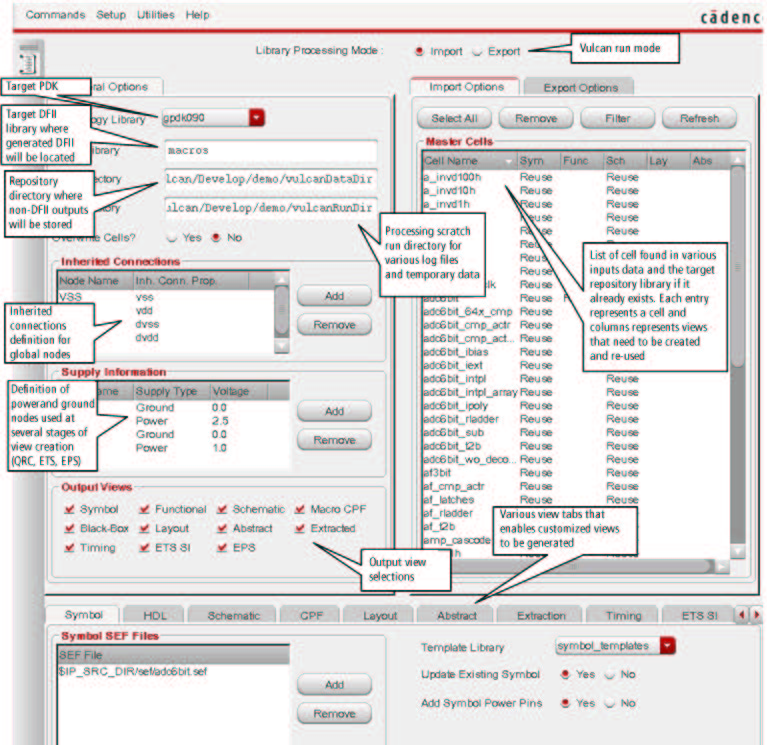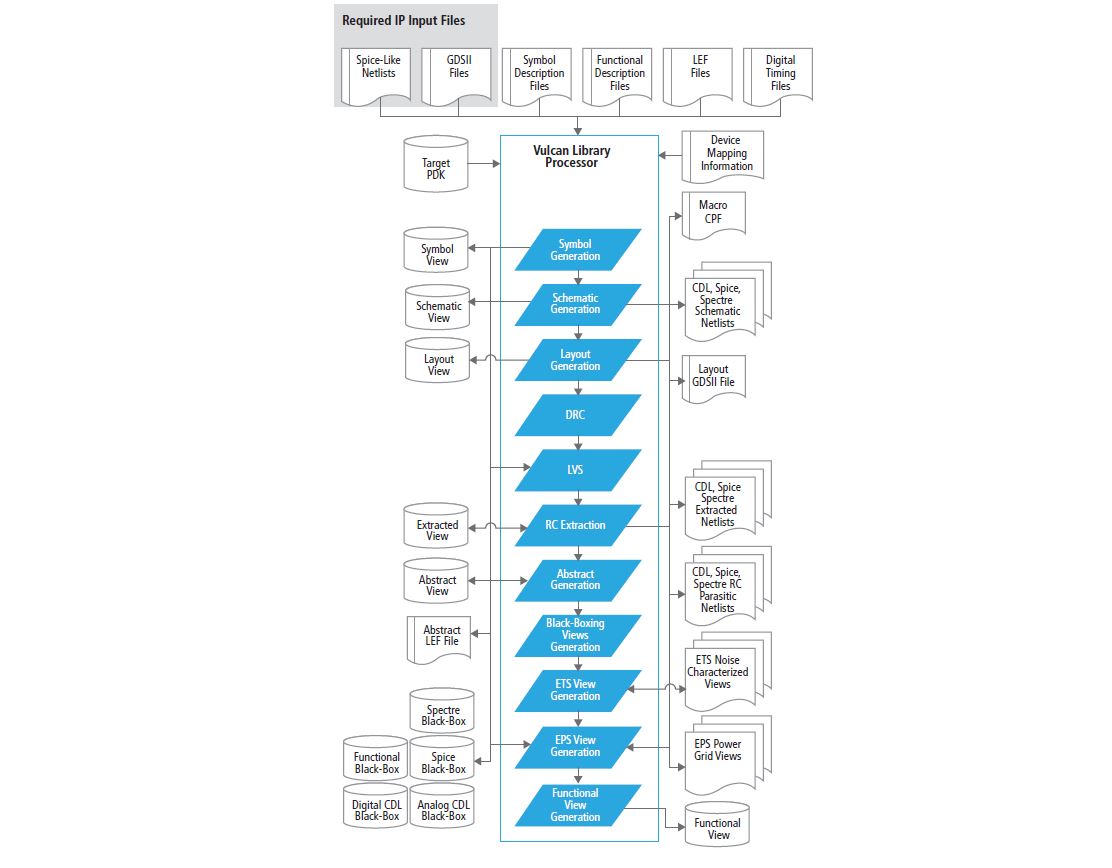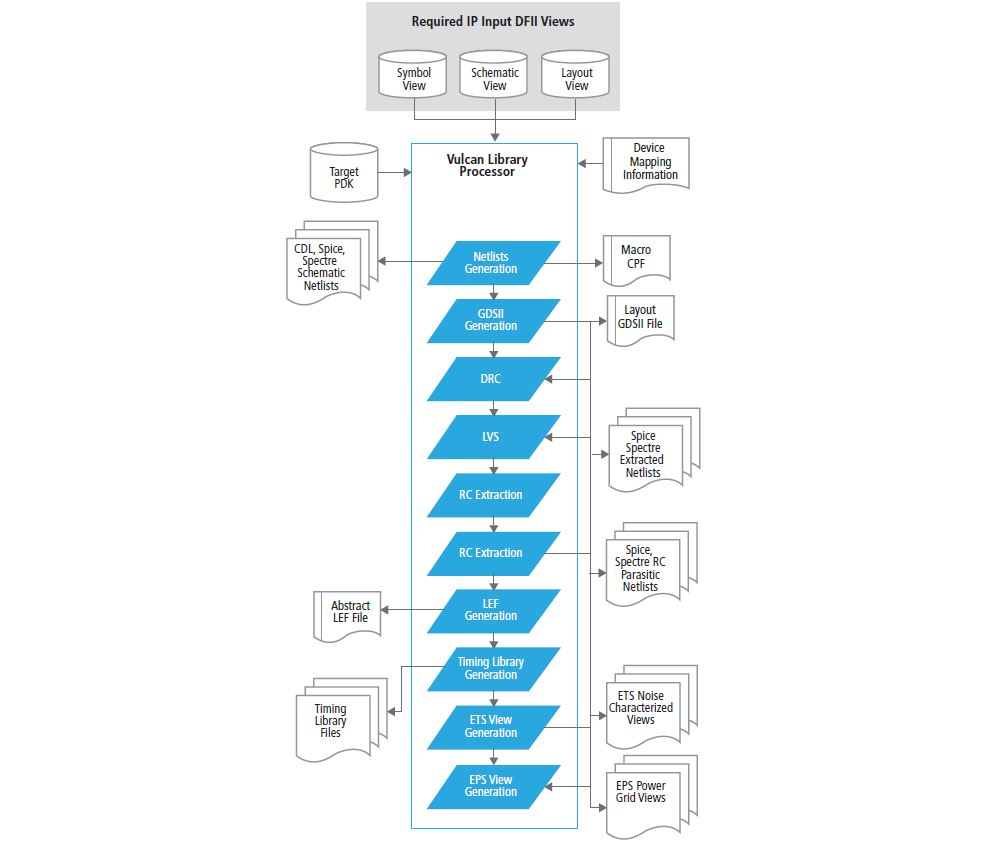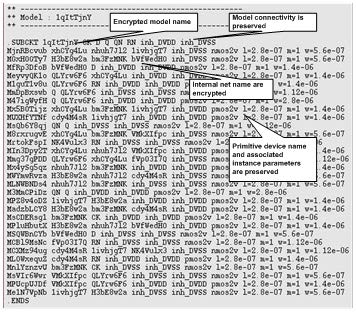Datasheet
Cadence VULCAN - Virtuoso Utility for Library Creation and Analysis
For Cadence Virtuoso, Encounter, and Incisive Users
The Cadence Virtuoso Utility for Library Creation and Analysis (VULCAN) solution provides an automated approach to accurately capture both the electrical and the physical characteristics of shared mixed-signal design library IP through the use of a standard interface format and an associated use model. VULCAN is integrated with the Virtuoso platform, so it can process data from the Cadence Incisive and Cadence Encounter platforms. With this solution, you can accurately reuse external IP.
Overview
Overview
In an AMS design, you need to accurately re-use external IP using the same design manufacturing process. Usually the design environment used to create the targeted design and the IP itself might be quite different (e.g. different tools suite, different process design kits (PDKs), different methodologies, etc).
The challenge in importing/exporting third-party IP is to accurately capture both the electrical and the physical characteristics of an IP within its own PDK for a different target AMS design environment. Ultimately, what you strive to do is to facilitate consistent data import/export exchange for a smooth implementation and verification process.
Provided as a Virtual Integrated Computer-Aided Design (VCAD) Productivity Package, the Cadence Virtuoso Utility for Library Creation and Analysis (VULCAN) solution achieves this goal by providing an automated approach to unify and qualify shared mixed-signal design library data through the use of a standard interface format and an associated use model.
IP Integration Challenges
As product development windows become smaller and smaller, you’re required to perform more and more block re-use instead of designing the entire integrated circuit from the ground up. There are different types of re-use:
The challenge in importing/exporting third-party IP is to accurately capture both the electrical and the physical characteristics of an IP within its own PDK for a different target AMS design environment.
Benefits
The VULCAN environment provides a graphical utility that captures an import/export methodology. This aligns the third-party IP with the current design PDK and ensures that all tools of the AMS design are enabled with this IP. The methodology involves both a thorough data preparation and a set of validation stages. VULCAN is integrated within the Virtuoso platform for processing data from both the Cadence Incisive and Cadence Encounter platforms.
For IP protection, VULCAN also provides a way to export encrypted CDL/SPICE/Cadence Spectre and GDSII files. This will secure design hierarchy, naming conventions, and netlist content.
VULCAN is a general-purpose infrastructure that creates a high-quality library structure based on standard file description. A Virtuoso SKILL-based software, VULCAN automates the import or creation of various representations of the IP. VULCAN not only creates the views but also uses various other Cadence tools to check the validity and the consistency of created views with reference input data, and also between the created views themselves.
Figure 1 shows the VULCAN IP import user interface.
Features
Import flow
Starting points for an IP import are the standard interfaces - the design should have at least a SPICE (or SPICE-like) netlist for circuit simulation and a GDSII file for physical design. Based on these two description files, the VULCAN library processor reconstructs all necessary views for an AMS design environment based on the Virtuoso environment, like:
Export flow
IP export uses the same infrastructure as that of IP import. The same data sets are generated and qualified. The starting point for the IP export is a DFII hierarchical design with the following views:
VULCAN provides a way to encrypt the data if the IP provider wants to protect their IP from being reverse engineered. Figure 4 is an example of an obscured CDL netlist.
Required Design Environment
The following infrastructure is required for a successful VULCAN IP import/export with all possible views:




